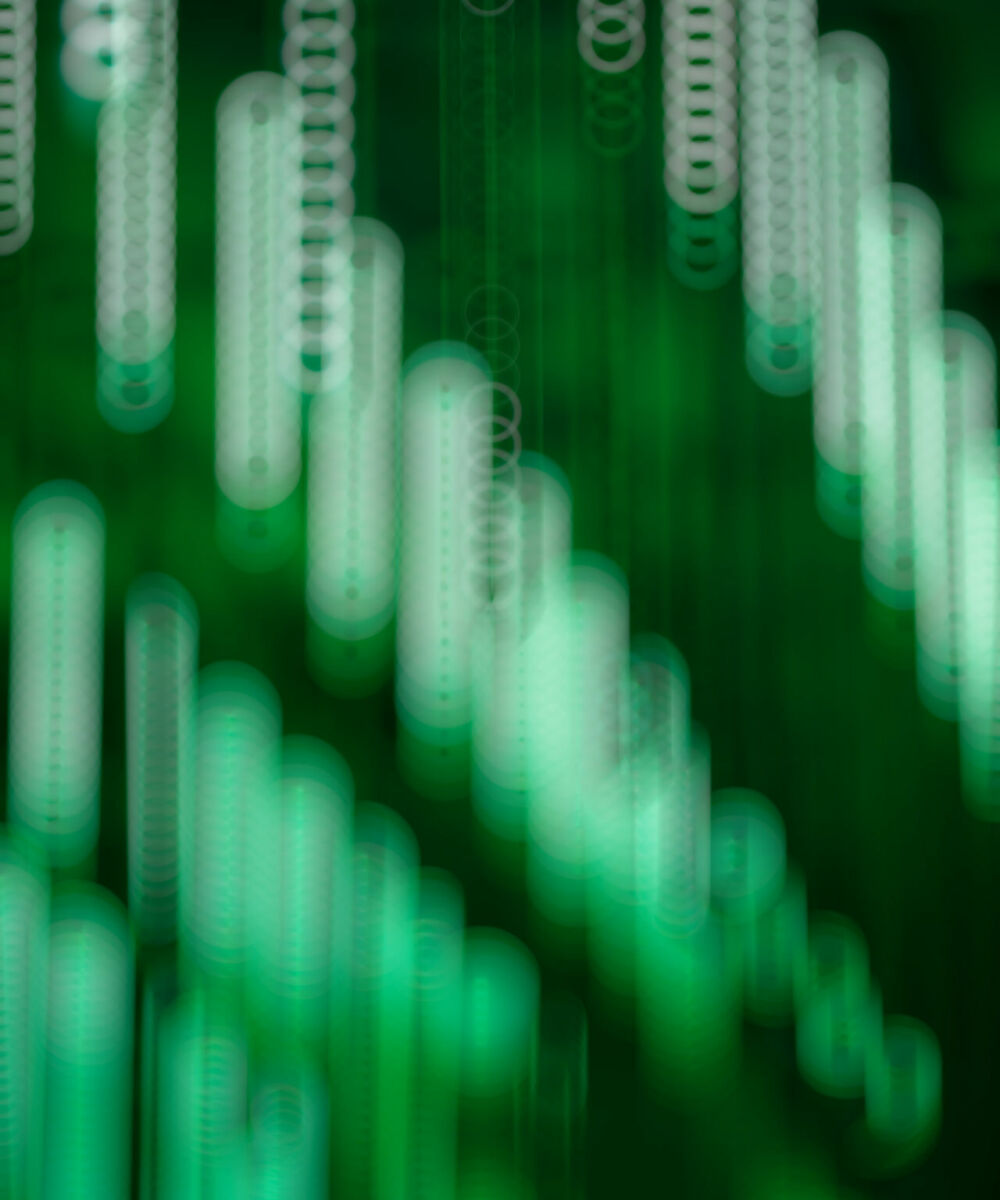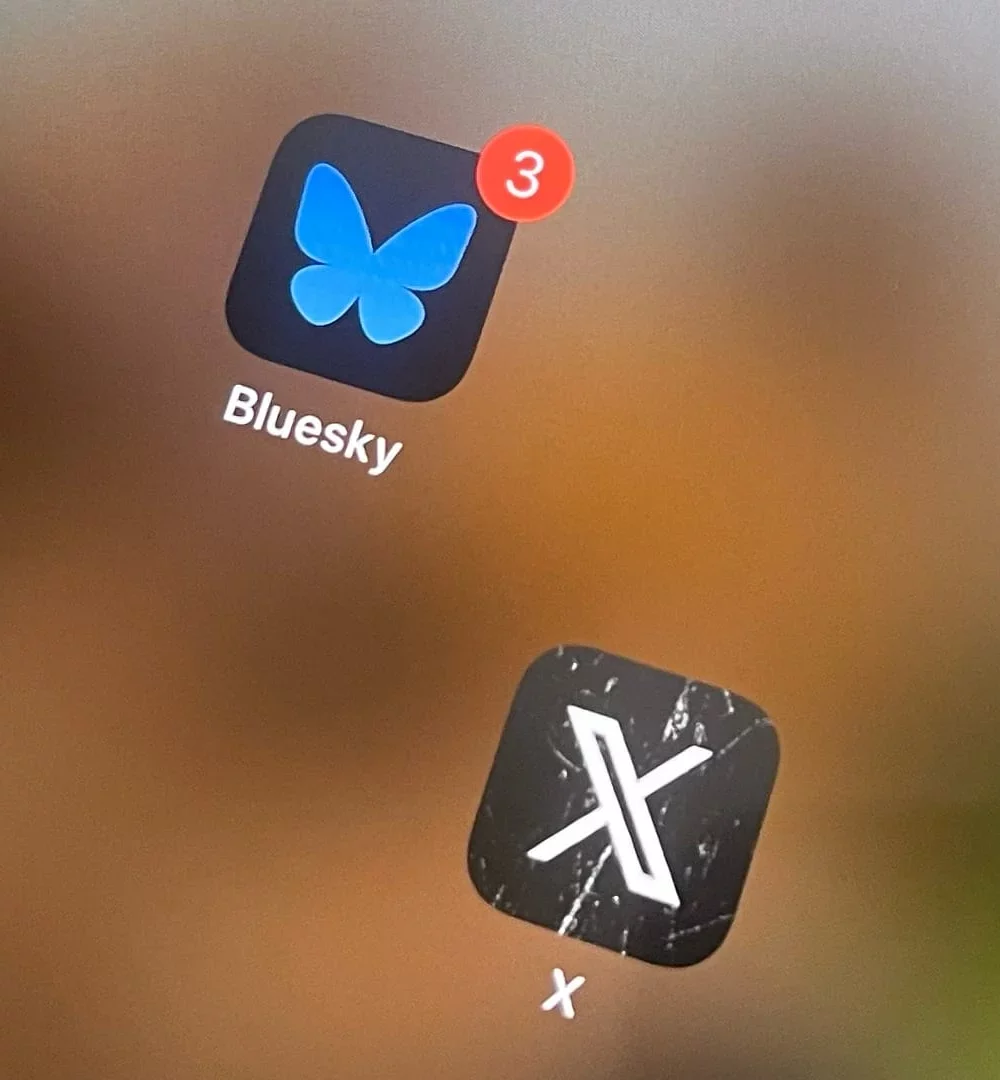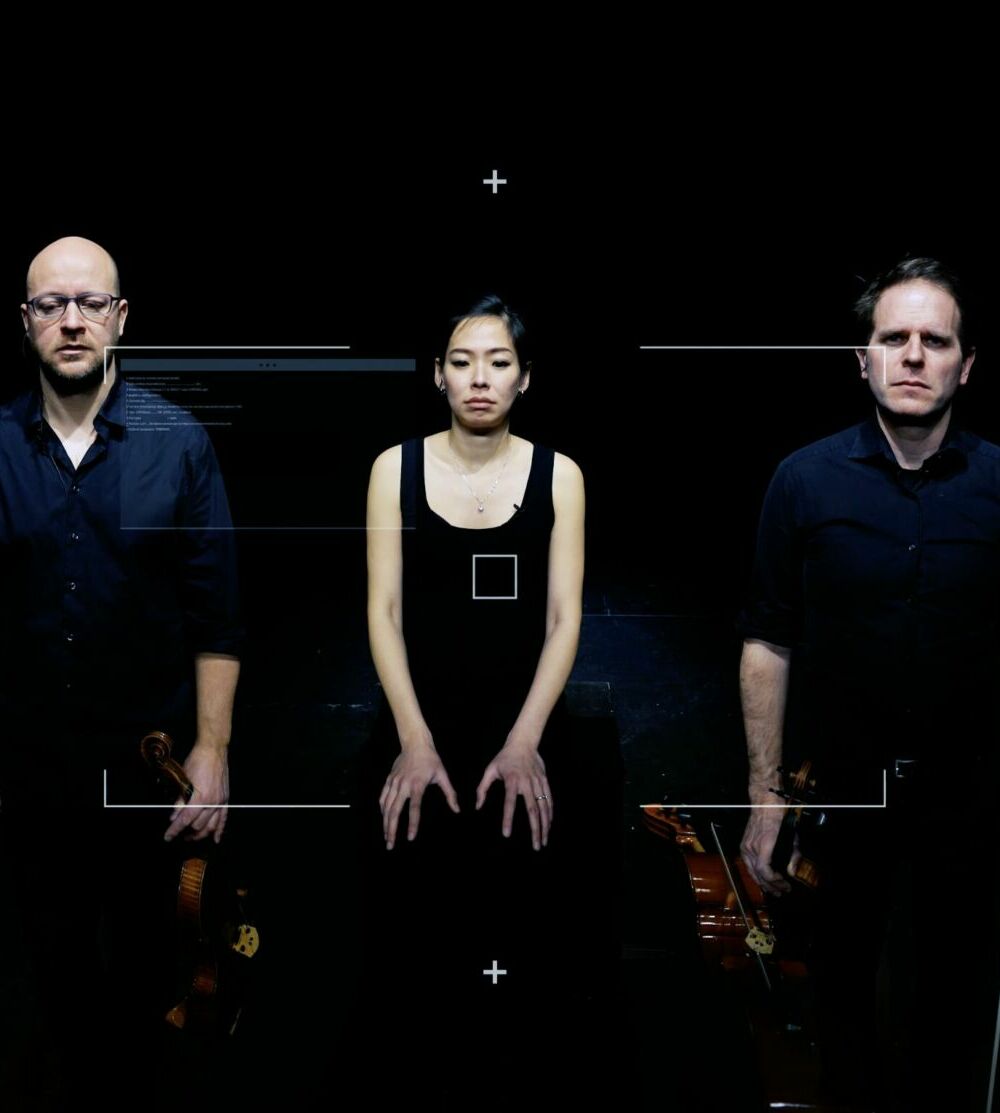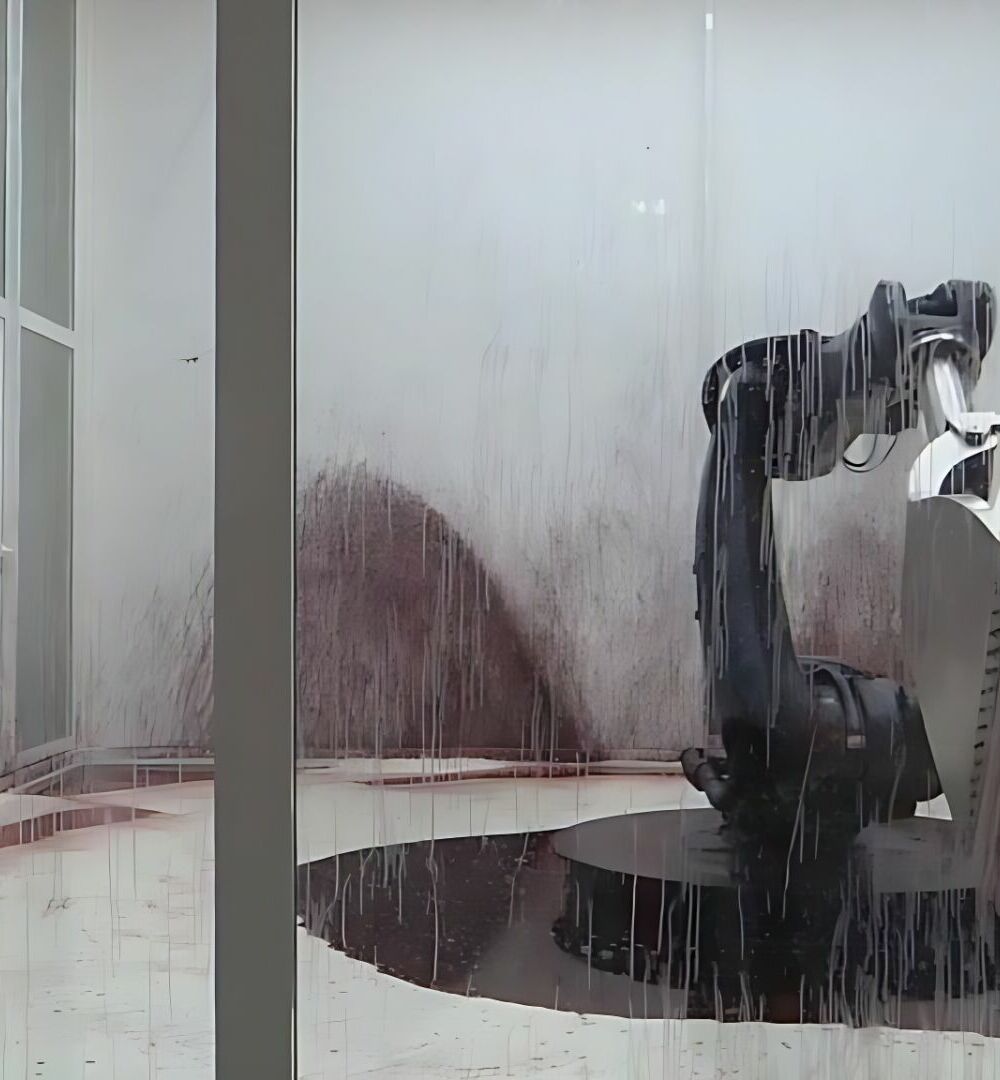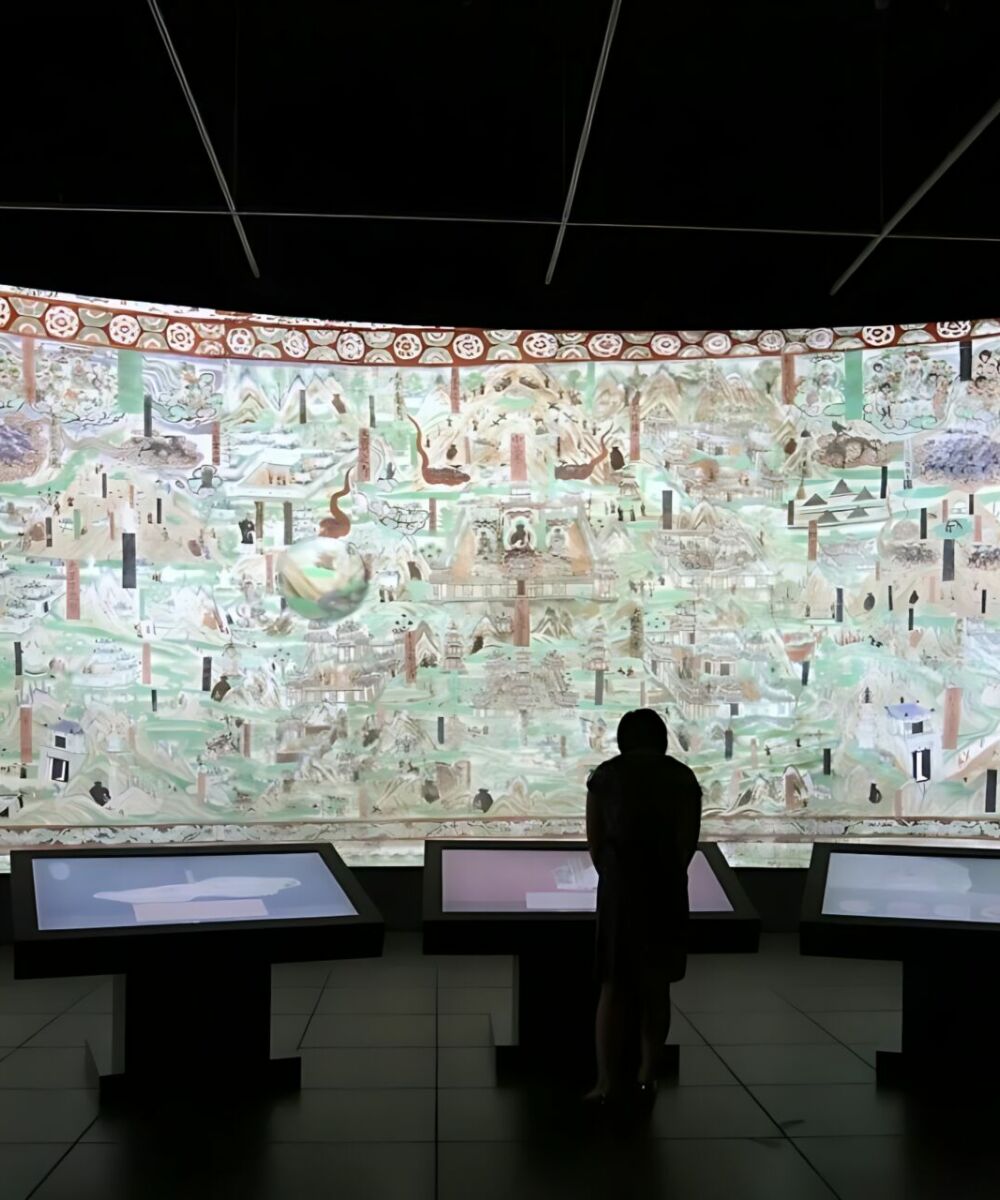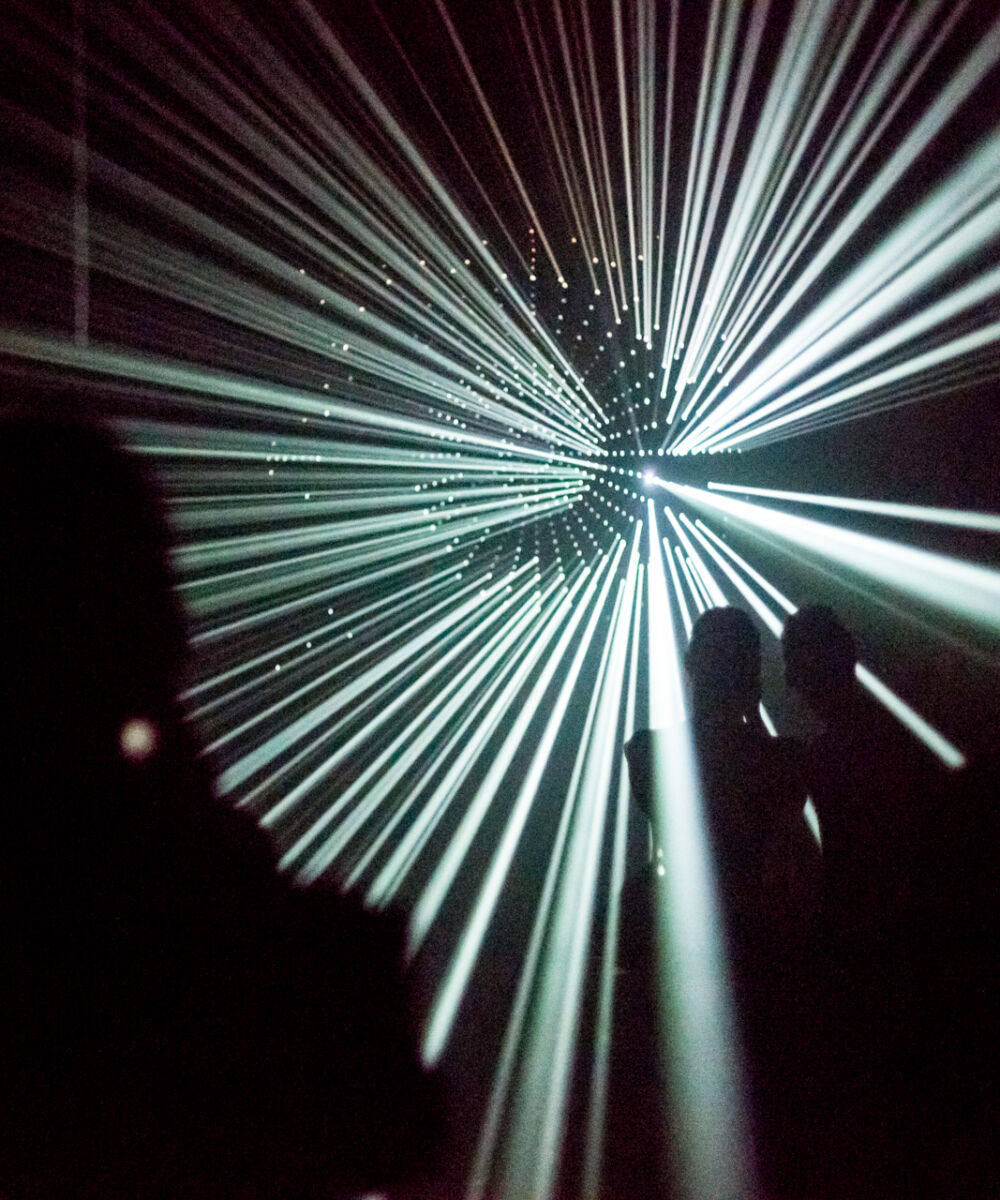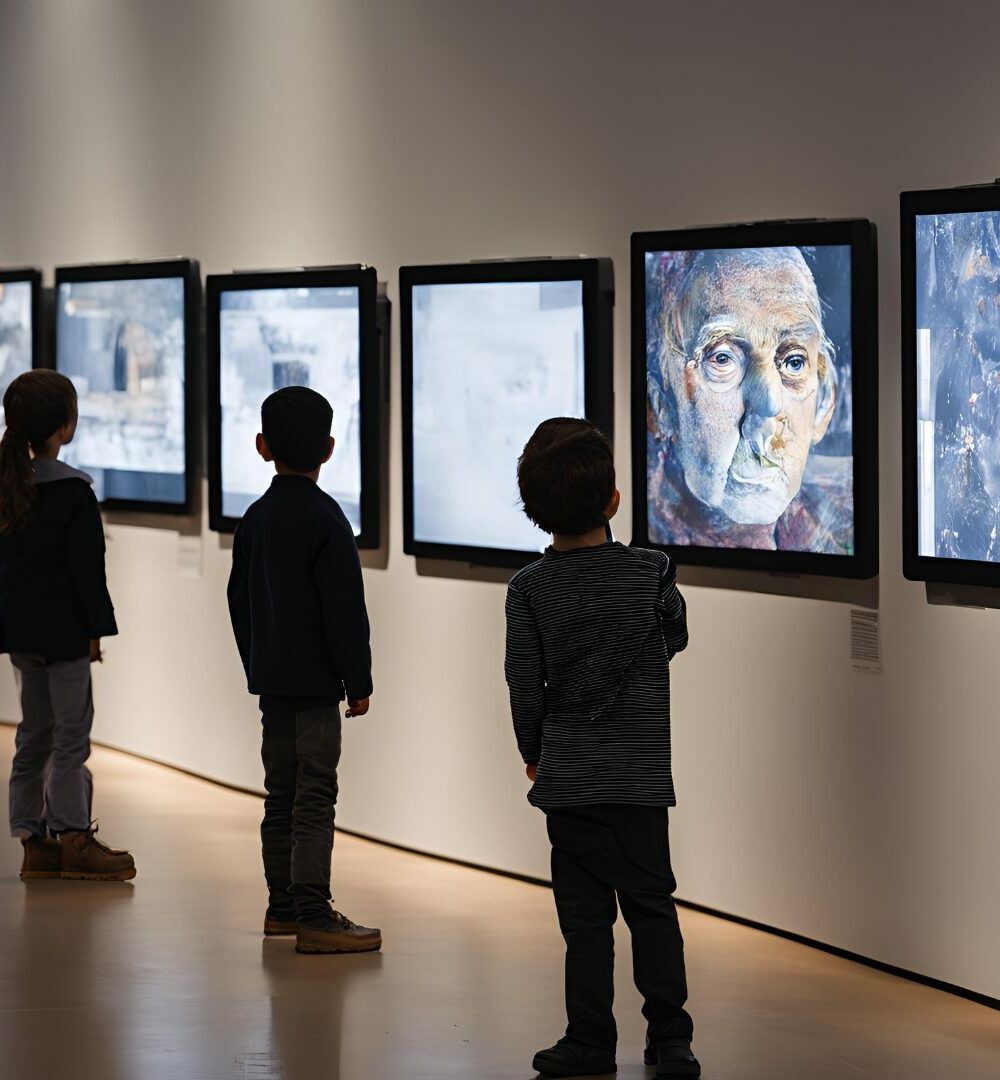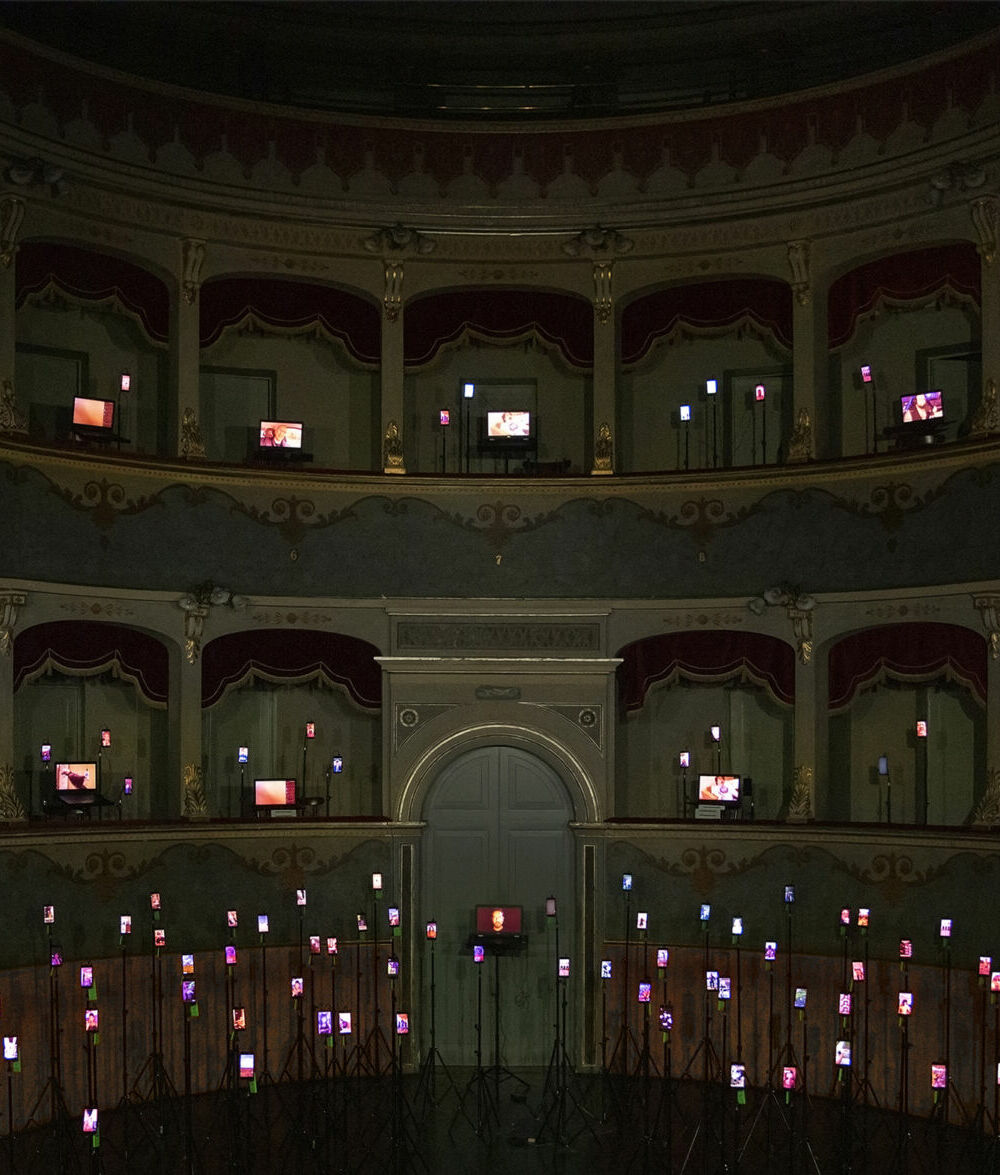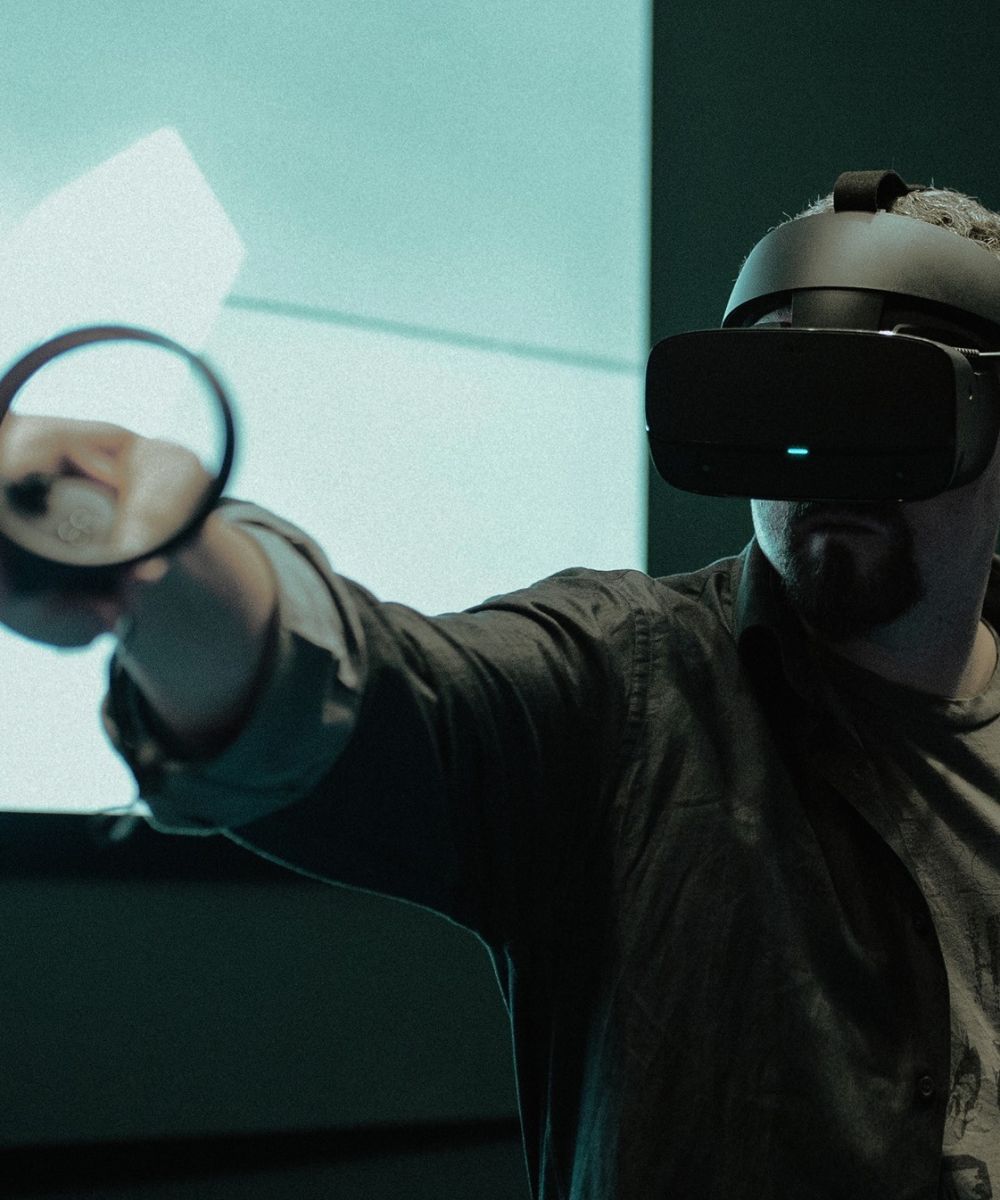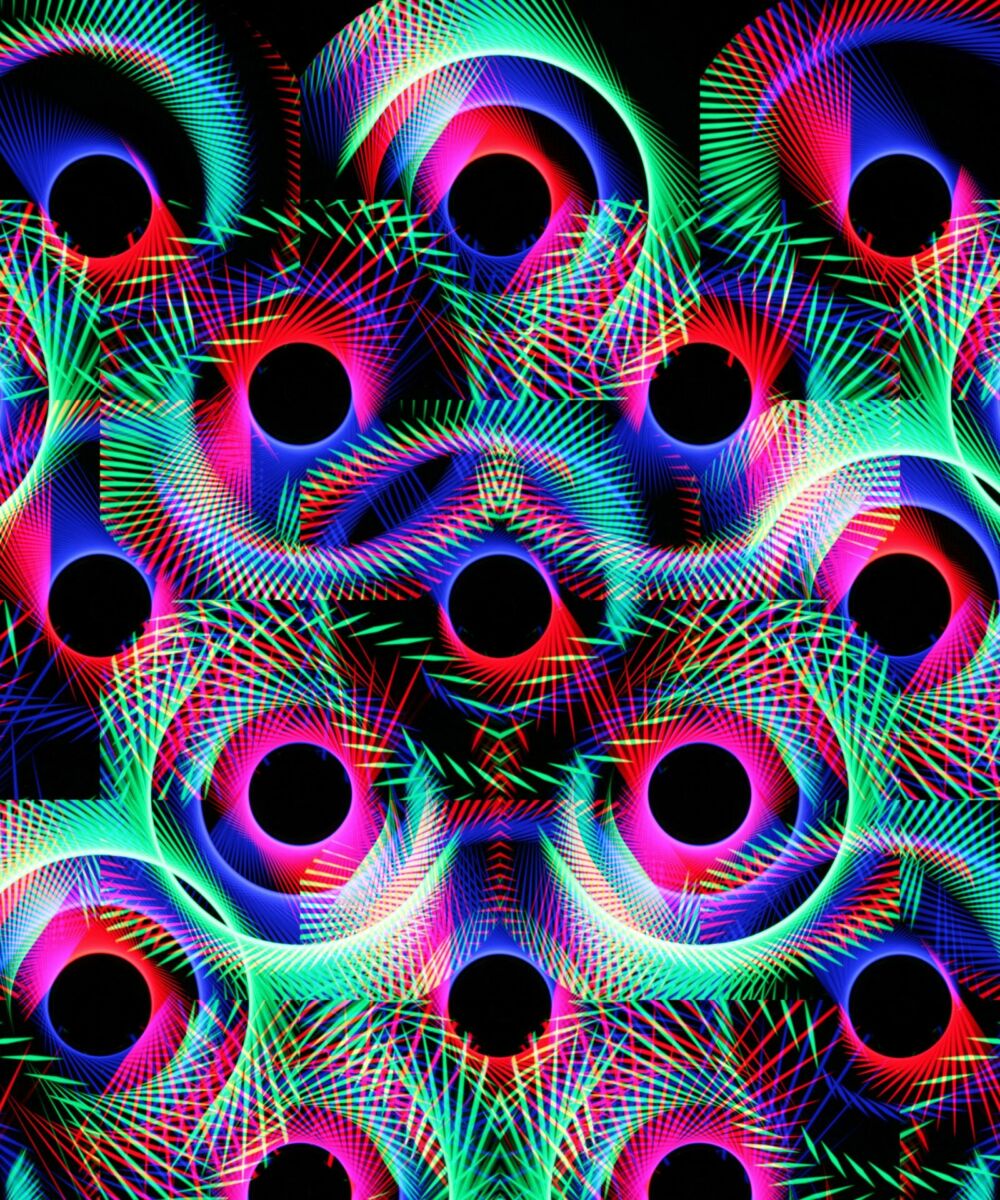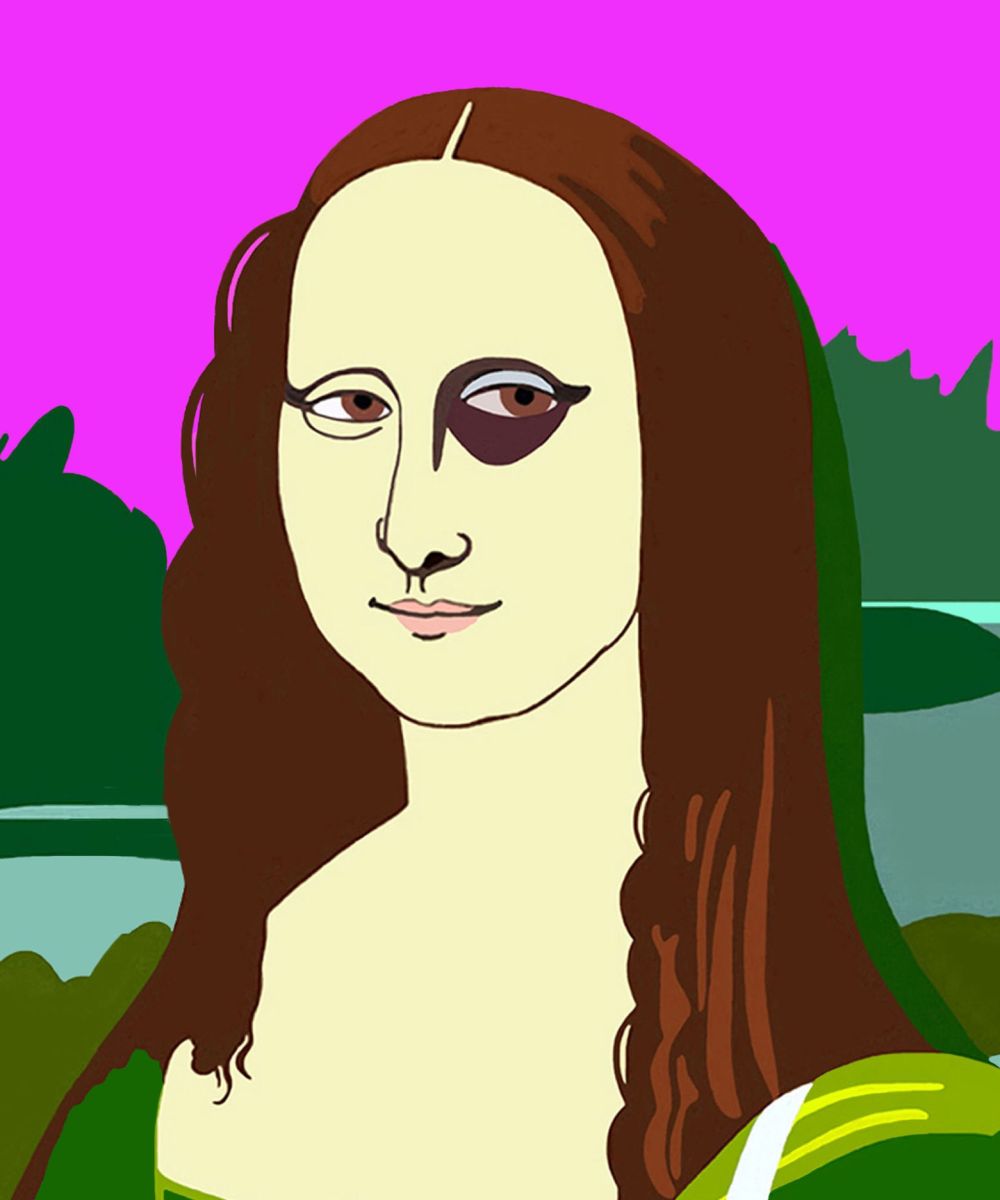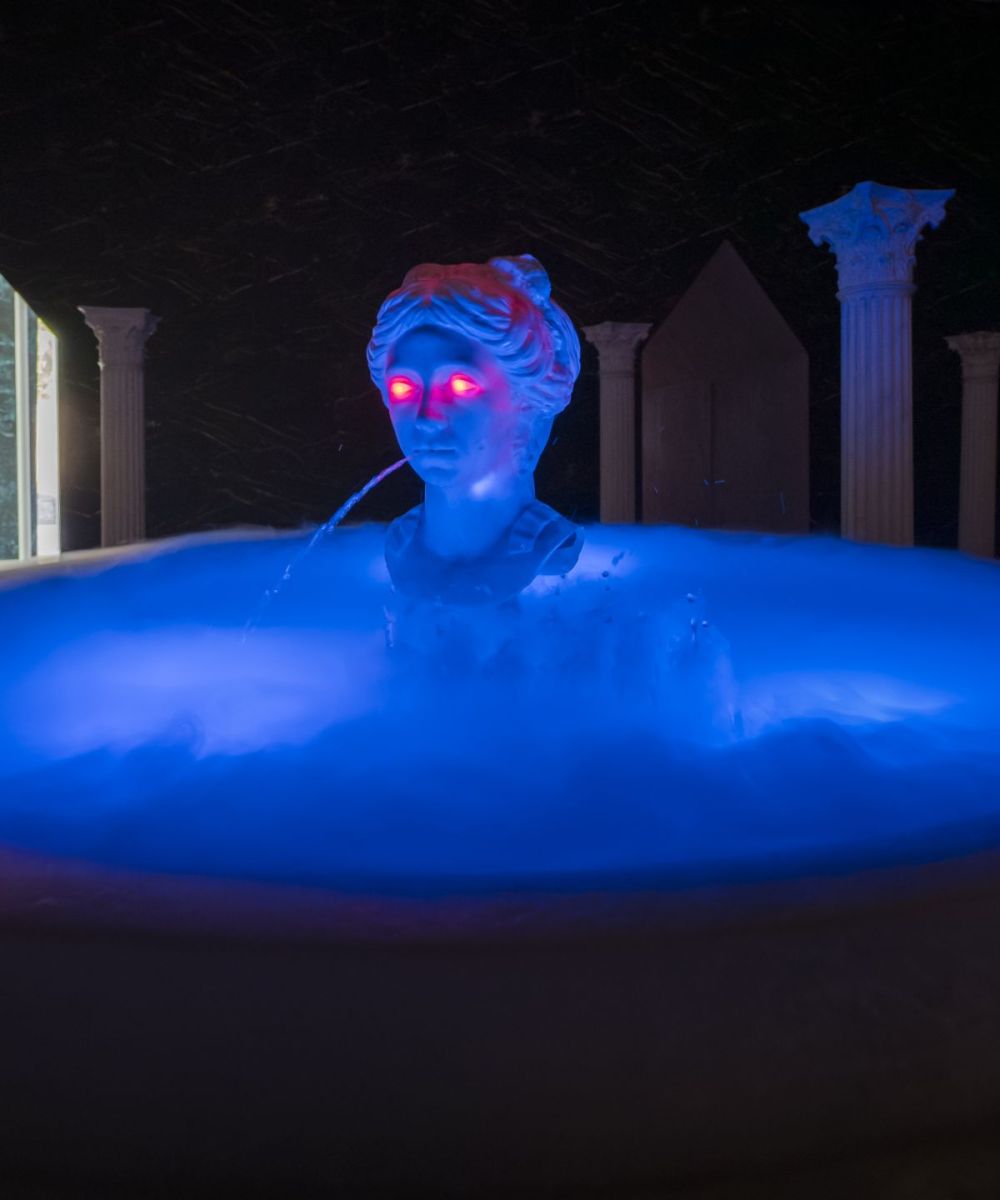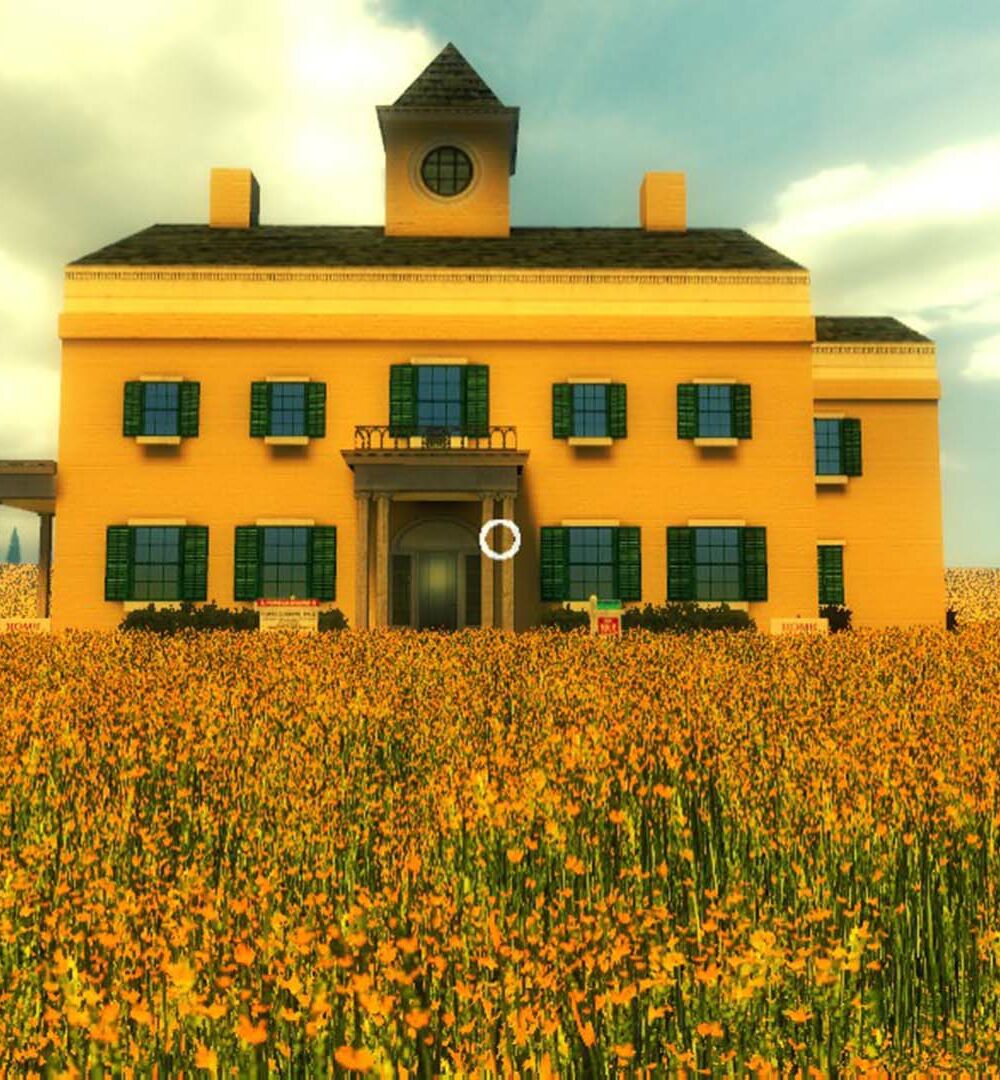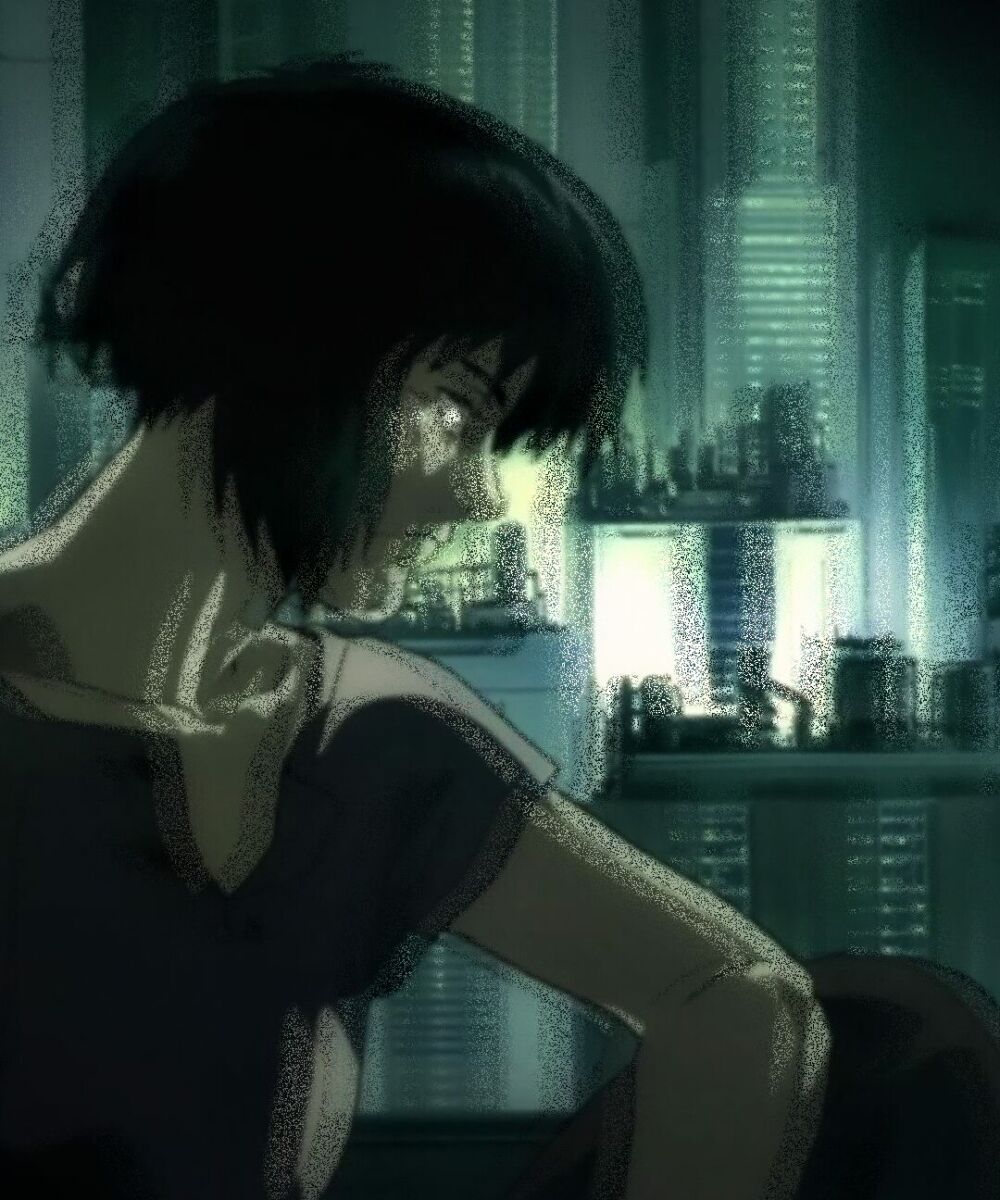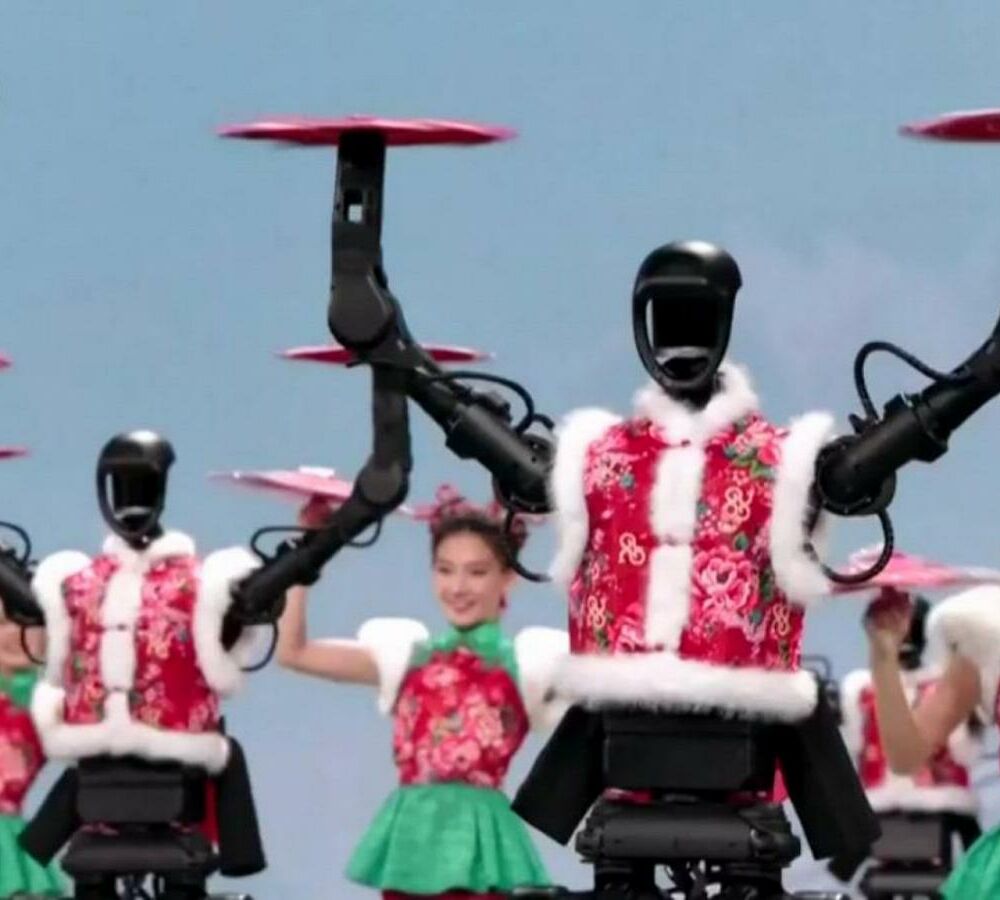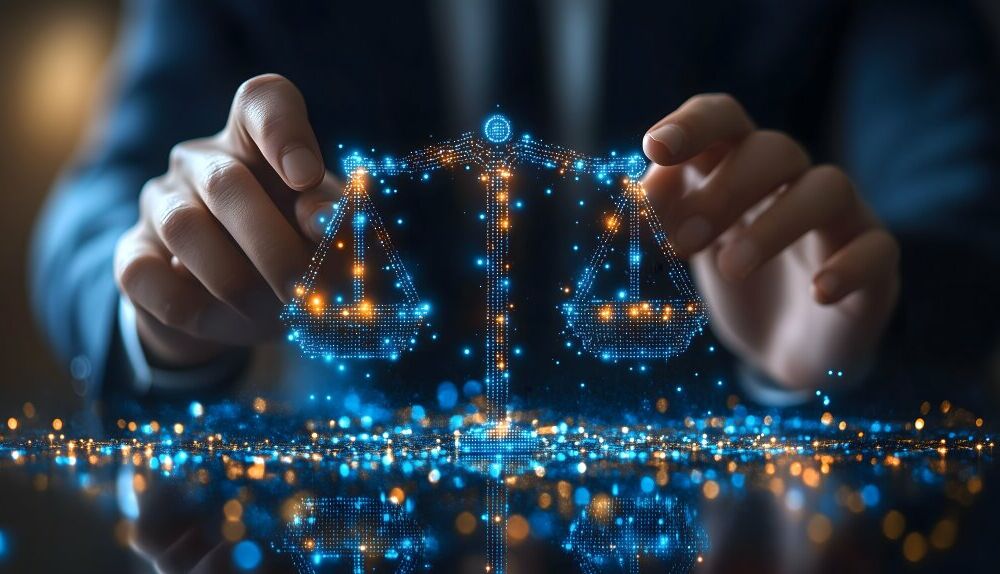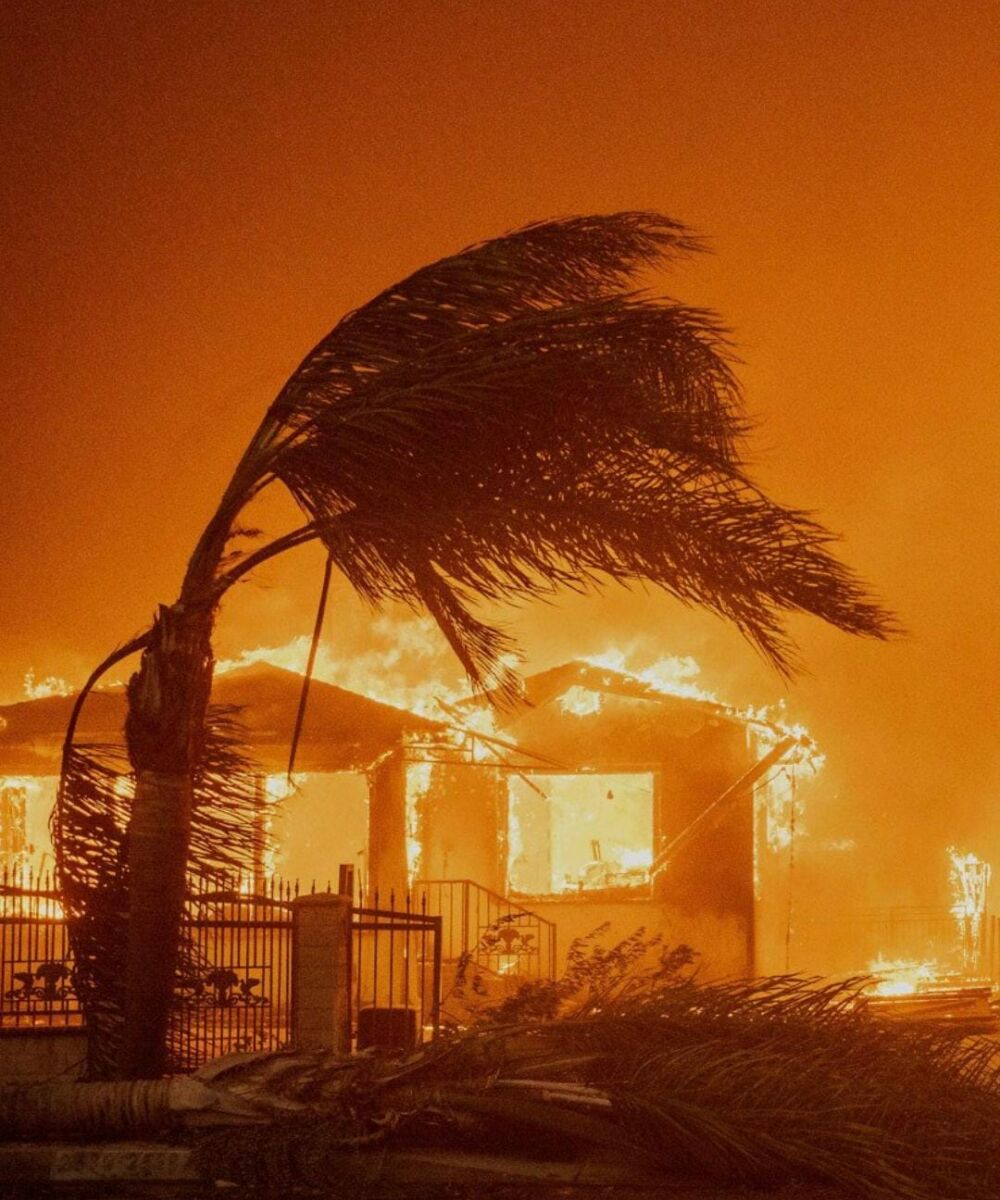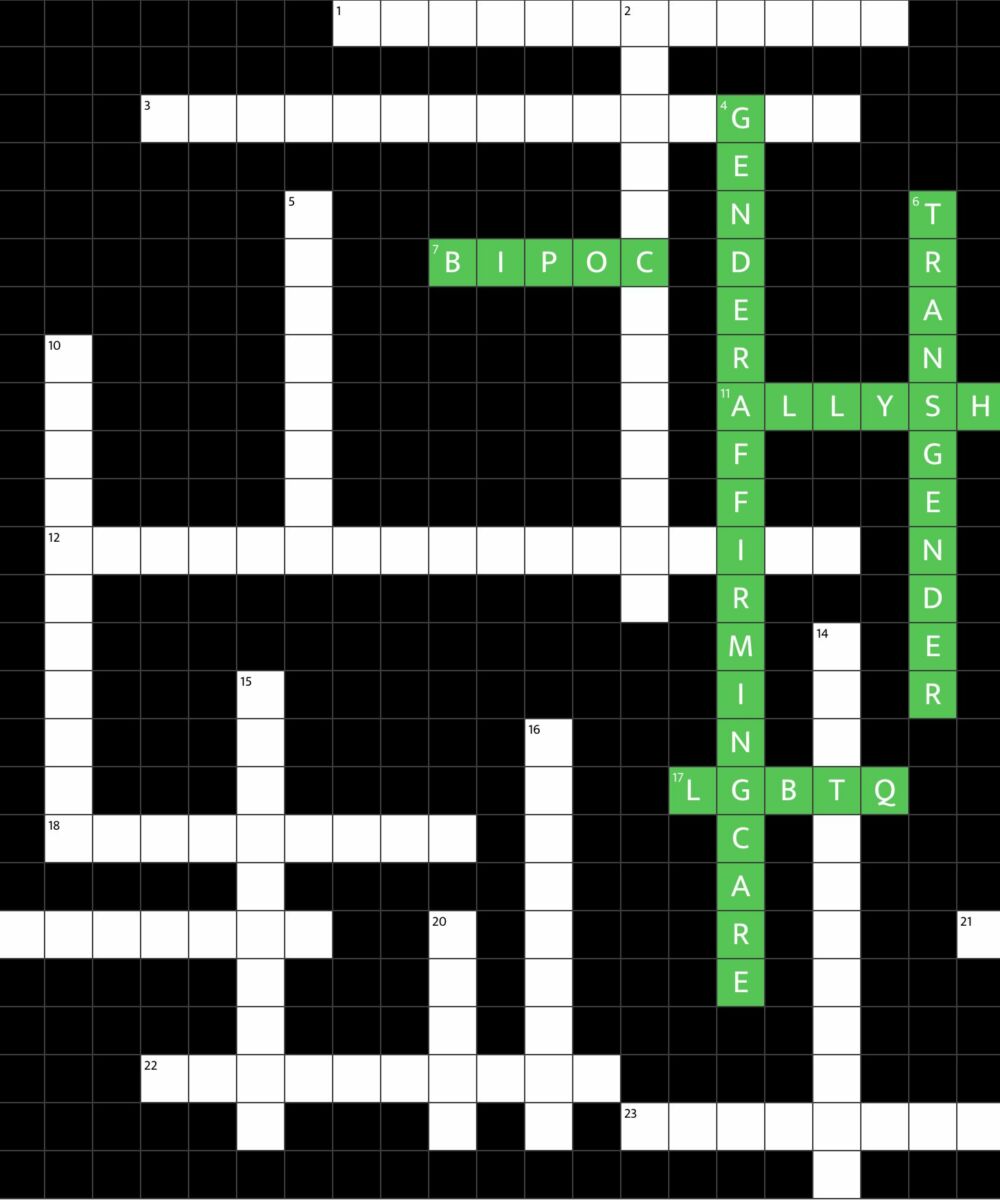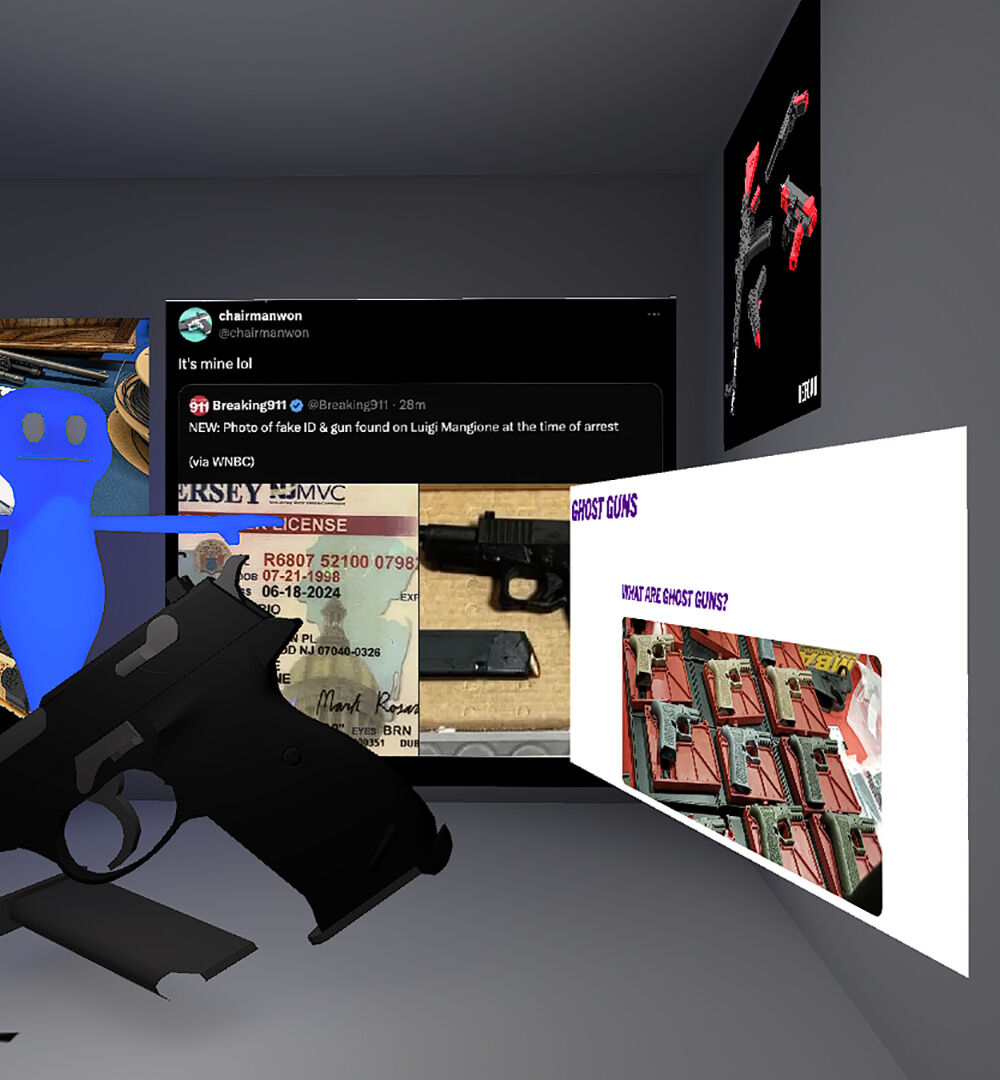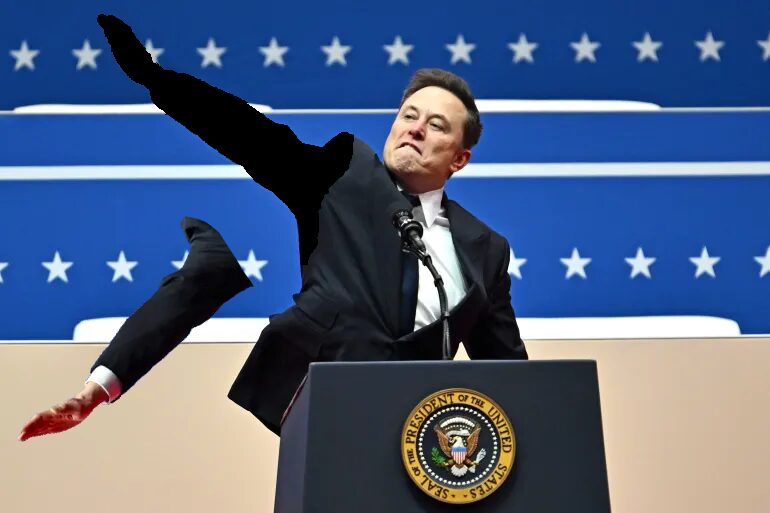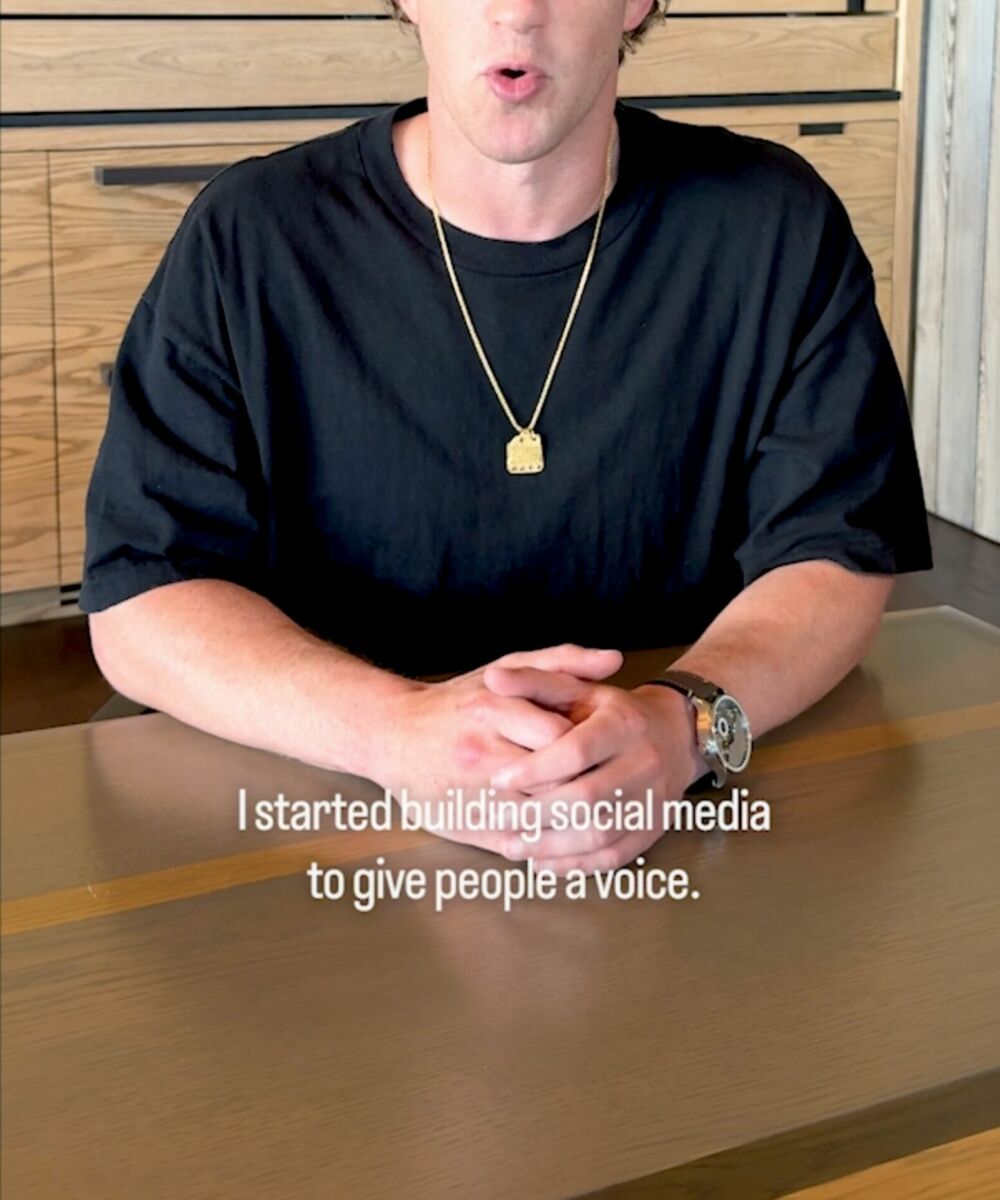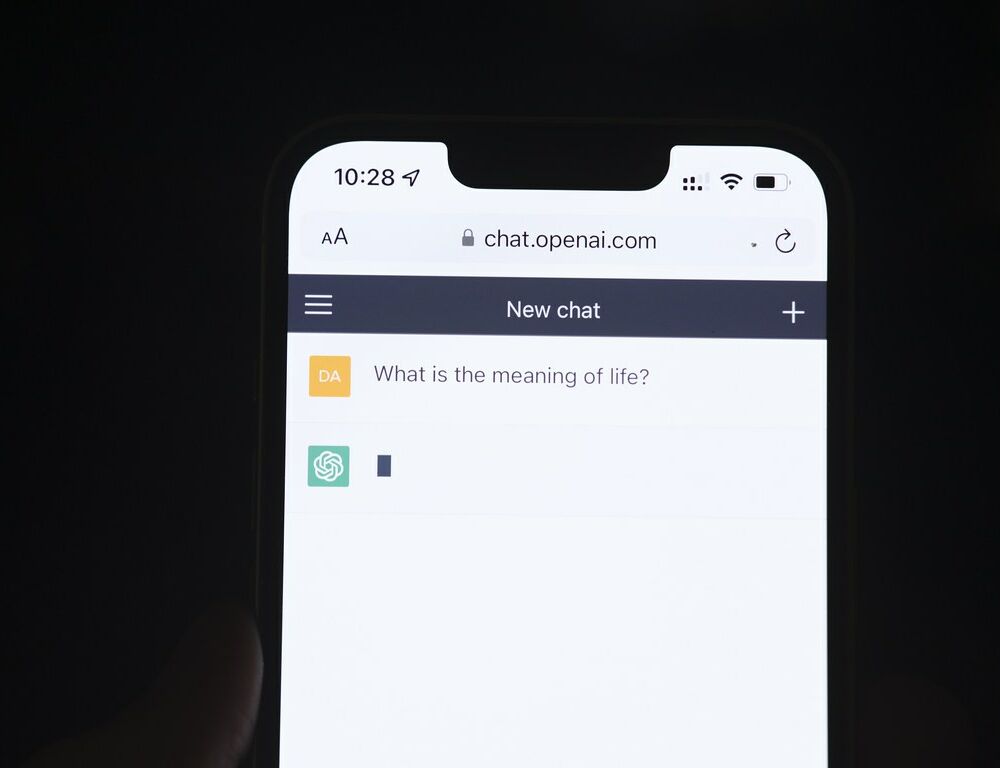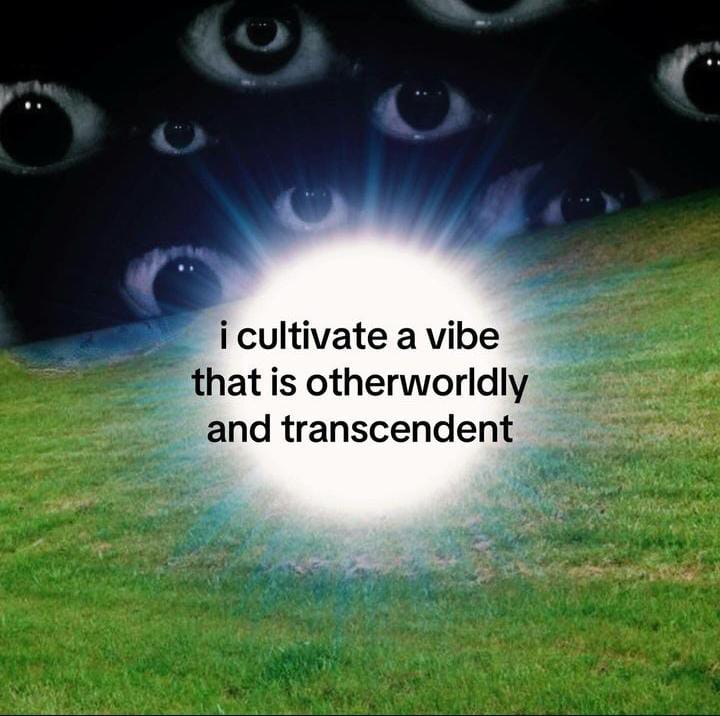NET ECOLOGY
New Forms of Intelligence: The Dialogue Between Natural and Artificial in the Global Ecosystem
di Laura Cocciolillo
What is intelligence? In the past, this question was answered solely in terms of human capacities. Today, however, technological evolution and the climate crisis urge us to explore intelligence beyond an anthropocentric view, conceiving it more broadly. Beyond the human realm, intelligence surfaces in the most unexpected forms of collaboration among organisms, as well as in synthetic generative systems (such as artificial technologies). But how can technoscience and its artifacts guide us toward a deeper understanding of non-human forms of intelligence?
On display at the Fondazione Modena Arti Visive (FMAV) in Palazzo Santa Margherita until January 12, 2025, Umwelt—curated by Marco Mancuso—explores this question from a critical starting point: overcoming the dichotomy between natural and artificial, human and non-human. The challenge for the future, then, is not simply to interact with non-human forms of intelligence but to foster a dialogue that redefines the relationship between humans and their broader environmental context. This new form of intelligence is no longer confined to the human mind but is also evident in the technological and biological dynamics that shape the world around us.
James Bridle’s reflections, conveyed through his works on display, are emblematic: “If all intelligence is ecological, meaning intertwined and relational, then AI offers a real way to come to terms with the other intelligences that inhabit the planet.” In this view, Bridle overturns the paradigm in which artificial intelligence (AI) is merely a tool of human dominance, presenting it instead as an opportunity to connect with non-human minds that inhabit the world.
AI thus becomes a central element in a broader reflection on the environment. In The Solar Panels (Radiolaria Series), Bridle explores the connection between natural energy and technology through a series of photovoltaic panels engraved with microscopic images of radiolaria—marine organisms that create intricate mineral structures from silicon, the same material used in solar cells. Bridle elevates common solar panel technology to a symbol of the fusion between biological and artificial systems, proposing a vision in which the boundary between natural and artificial is blurred. Here, intelligence, whether biological or computational, is part of a single ecology.
How can technoscience and its artifacts guide us toward a deeper understanding of non-human forms of intelligence?
The exhibition features works that span scientific inquiry, data analysis, and worlding techniques, speculative constructions of physical and digital worlds. A notable example is The Nebelivka Hypothesis by the Forensic Architecture collective. Inspired by the prehistoric city of Nebelivka in Ukraine, dating back 6,000 years, this piece reconstructs, through the use of space technology and archaeological data, the complexity of urbanization in ancient times. Previously presented at the 2023 Venice Architecture Biennale, the installation invites viewers to consider the ecological and political dynamics that govern urban space, challenging the division between human intelligence and environmental systems.
Other works in the exhibition explore the theme of artificial creation. Synthetic Iris Dataset by Anna Ridler features a print of synthetic flowers digitally generated by AI. This series reflects on the concept of authenticity in a world where the artificial becomes increasingly indistinguishable from the natural. The work raises questions about what we consider “real” and “natural,” inviting the viewer to rethink the relationship between human and technological creativity. Additionally, Decohering Delineation, by the collective Entangled Others, uses neural networks and oceanic data to visualize the interconnections between artificial and natural ecosystems. Through quantum computation, the piece illustrates how these worlds are intertwined and how technology can offer new ways to understand and preserve fragile ecological balances.
Umwelt represents a turning point in the way we understand intelligence and its expression in the contemporary world. Moving away from an anthropocentric perspective, the exhibition proposes an idea of intelligence as an ecological phenomenon, shared among human, natural, and artificial realms. This approach invites viewers to reflect on how intelligence is distributed across a network of relationships involving all living beings—not just humans.
At a time when climate change and advanced technologies are challenging our thought models, Umwelt encourages us to imagine a future in which intelligence is not a tool for dominance but a relational quality that unites us with the surrounding world. The exhibition invites us to transcend the dichotomy between nature and technology and to embrace an ecological perspective on intelligence. In this new vision, intelligence is not merely cognition but an integral part of a complex, interconnected ecosystem in which every component, natural or artificial, plays a vital role.
Laura Cocciolillo
Is an art historian specialising in art and new technologies and new media aesthetics. Since 2019 she has been collaborating with Artribune (for which she is currently in charge of new media content). In 2020 she founded Chiasmo Magazine, an independent and self-funded Contemporary Art magazine. From 2023 he is web editor for Sky Arte, and from the same year he takes care, for art-frame, of the column ‘New Media’, dedicated to digital art.




